1. Petra, Jordan
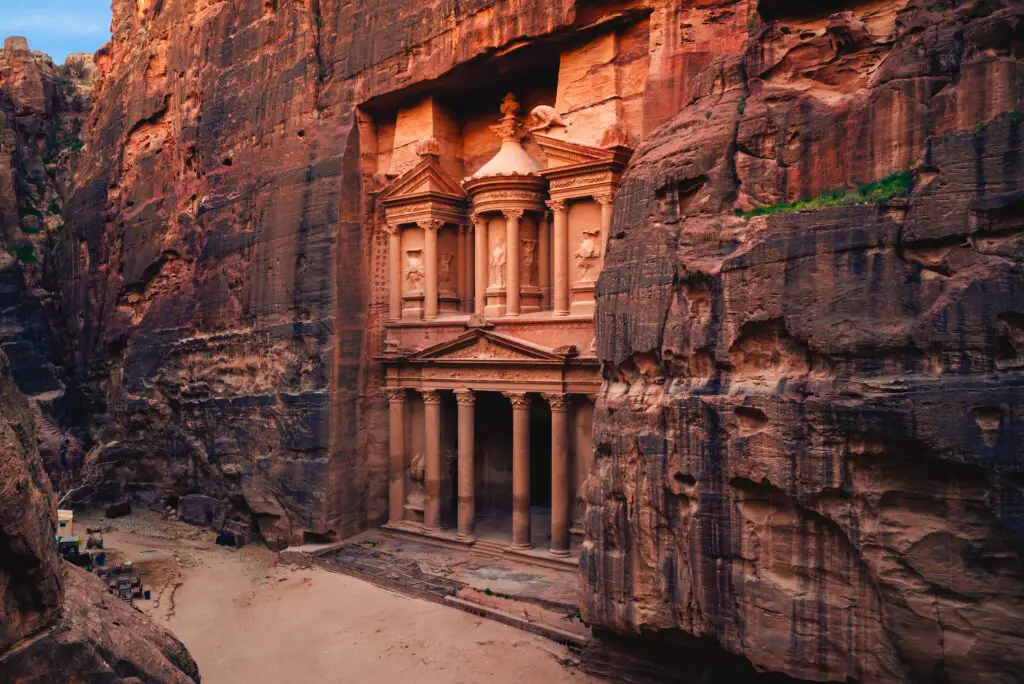
Petra, a city carved into the rocky cliffs of Jordan, stands as a testament to the ingenuity of its creators. The Nabateans, who built this stunning city in the 4th century BC, chose a desert environment surrounded by jagged mountains. The heat in Petra can reach unbearable levels, yet the city flourished due to an advanced water management system, including aqueducts and cisterns, that allowed the Nabateans to make the desert bloom. The sheer difficulty of the terrain made it nearly impossible to access, yet Petra became a bustling hub of trade, attracting people from across the ancient world.
The location of Petra, nestled deep in a canyon and isolated from the rest of the world, made it difficult for invaders to reach. Yet, despite its strategic advantages, the city’s eventual decline was inevitable. Earthquakes and the harsh desert climate slowly wore down the city’s infrastructure, and its isolation contributed to its eventual abandonment. Still, the city remains an architectural wonder, standing strong amidst the desert’s unforgiving nature.
2. Machu Picchu, Peru
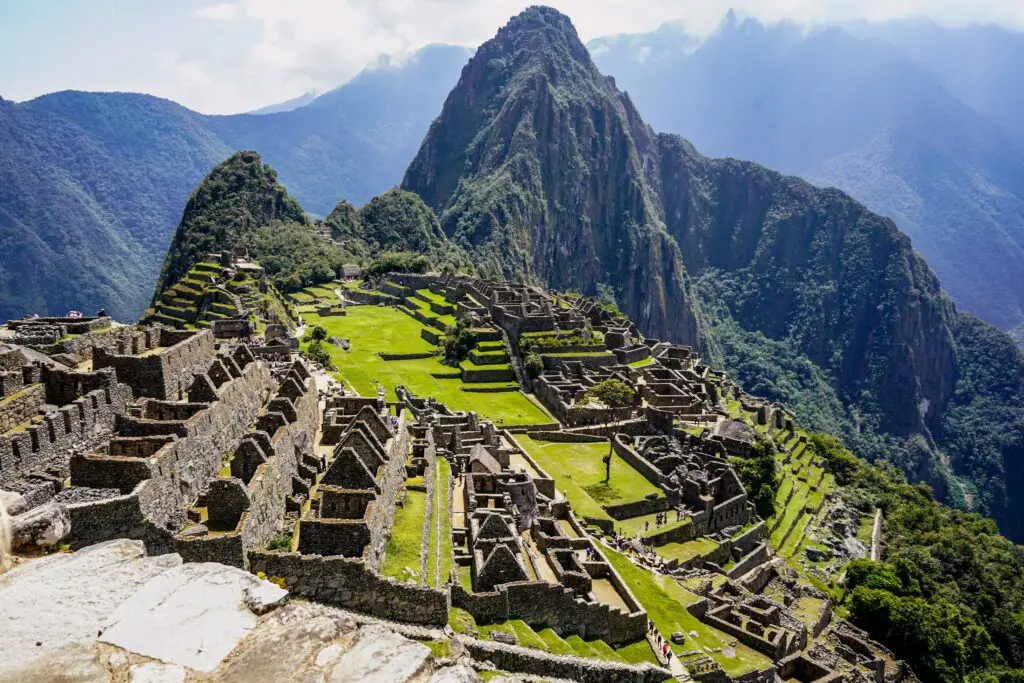
High in the Peruvian Andes, Machu Picchu sits at a staggering 7,970 feet above sea level, surrounded by mist-covered mountains and steep slopes. The Inca city was built in the 15th century, and its location could hardly seem more impossible. The altitude alone would have made construction difficult, but the Incas were experts in overcoming such obstacles. They constructed terraces to manage agriculture, allowing them to farm on steep mountainsides and maximize the limited land available in such a remote area.
Despite its breathtaking beauty, the environment posed serious threats to the people who lived there. Landslides, harsh weather conditions, and the difficult terrain made survival a constant challenge. Yet, the Incas flourished in this inhospitable environment, using their knowledge of engineering and water management to make Machu Picchu thrive. Though it was abandoned for centuries, the site’s survival speaks to the remarkable adaptability of the Inca civilization.
3. Babylon, Iraq
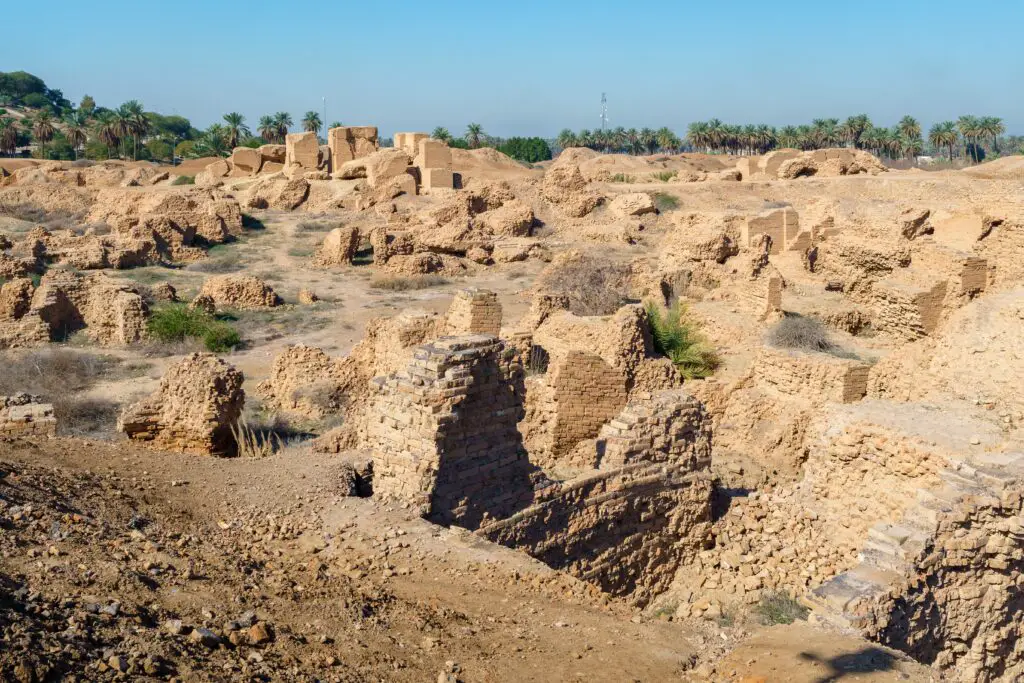
Babylon, the once-great city of Mesopotamia, stood in a region that is now part of modern-day Iraq. Situated near the Euphrates River, the city thrived from the 18th century BC, yet the surrounding desert conditions made it an unlikely location for a great metropolis. The intense heat, periodic floods, and the scarcity of resources in the region created constant challenges for those who called Babylon home. However, the Babylonians developed advanced irrigation techniques and trade routes that made their city one of the wealthiest and most powerful in the ancient world.
While Babylon’s proximity to the river provided some benefits, it also made the city vulnerable to flooding, which could devastate its infrastructure. The harsh environment and the constant threat of invasion by neighboring civilizations eventually led to its fall. Despite these challenges, Babylon’s legacy lived on, with its architectural wonders and cultural achievements continuing to inspire generations.
4. Teotihuacan, Mexico
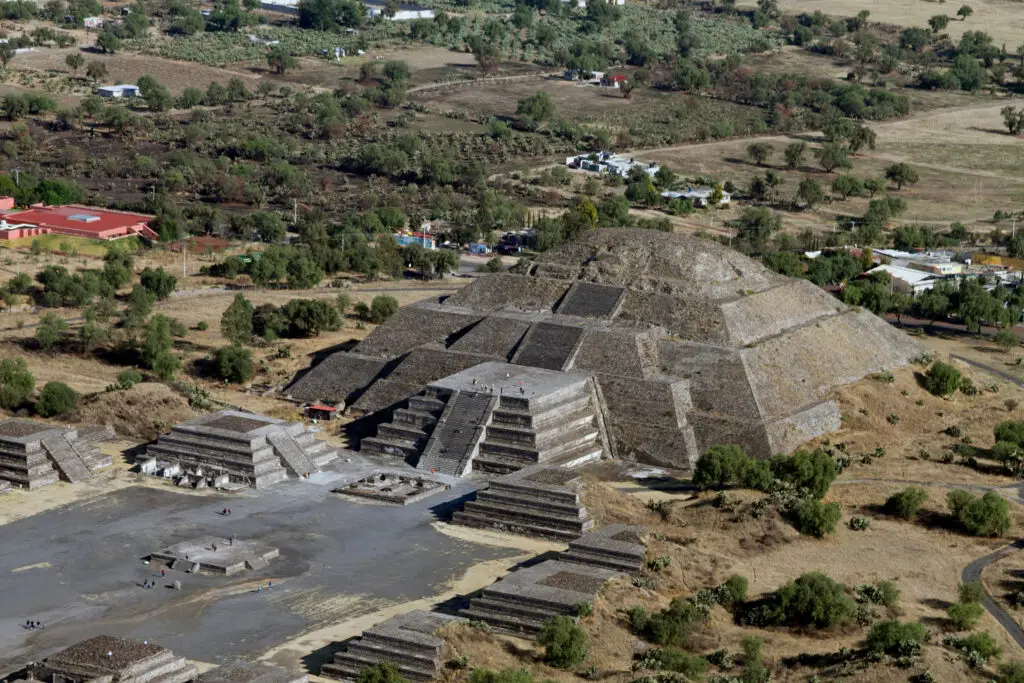
Teotihuacan, an ancient Mesoamerican city, is located in the Valley of Mexico, surrounded by volcanoes and rugged, dry land. Built around 200 BC, the city was one of the largest and most sophisticated in the ancient world. Its planners overcame the challenges of the region’s arid climate by developing advanced agricultural techniques, including terracing and irrigation, which allowed them to create a thriving urban center in a desert-like environment. The city’s grand pyramids, roads, and public spaces were feats of engineering that seemed almost impossible in such a harsh landscape.
Yet, despite their innovations, Teotihuacan’s location in the midst of volcanoes posed significant risks. The threat of eruptions and earthquakes loomed over the city, and volcanic ash could easily disrupt the agricultural systems that supported it. As the city grew, it became increasingly vulnerable to environmental pressures, and by the 7th century, it fell into decline, likely due to a combination of internal unrest and external threats.
5. Great Zimbabwe, Zimbabwe
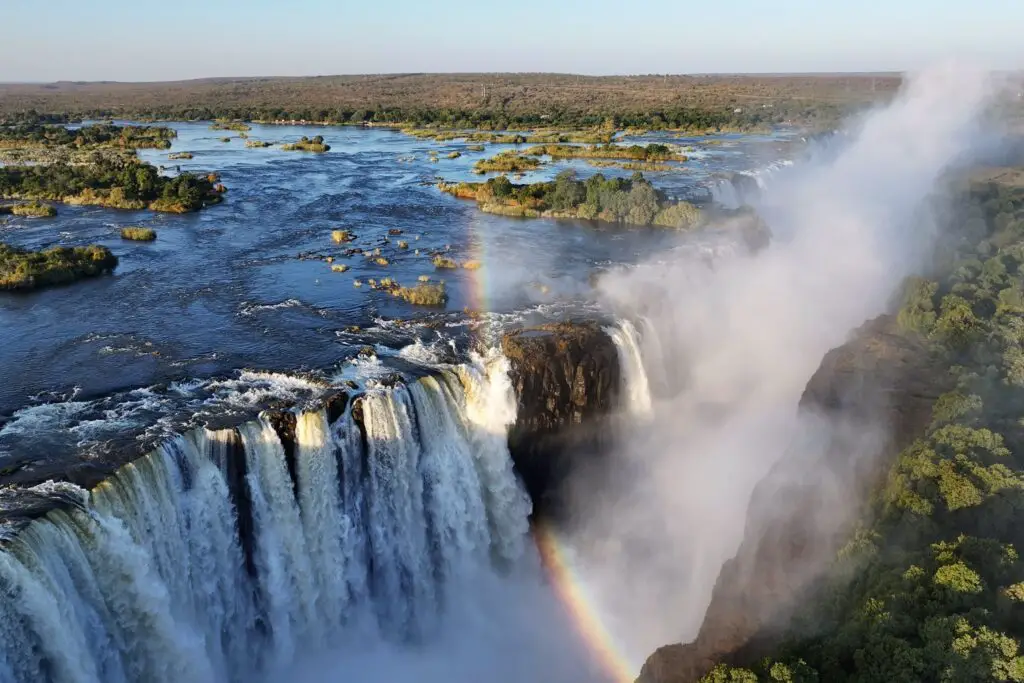
Great Zimbabwe was a thriving city built in the southeastern hills of Zimbabwe, a region that experiences a harsh climate and challenging geography. Founded around the 11th century, the city was a marvel of engineering, with impressive stone structures, including the iconic Great Enclosure. The people of Great Zimbabwe built their city in a region that was prone to droughts and floods, making agriculture and survival a constant struggle. Despite these challenges, the city flourished for centuries, thanks to their mastery of trade and resource management.
The city’s location, surrounded by hills and dense forests, was both a blessing and a curse. It provided natural defense against invaders but also limited the city’s access to resources like fertile land. Over time, however, environmental pressures and resource depletion may have contributed to the city’s eventual decline, as people moved on to other regions in search of more sustainable living conditions.
6. Carthage, Tunisia
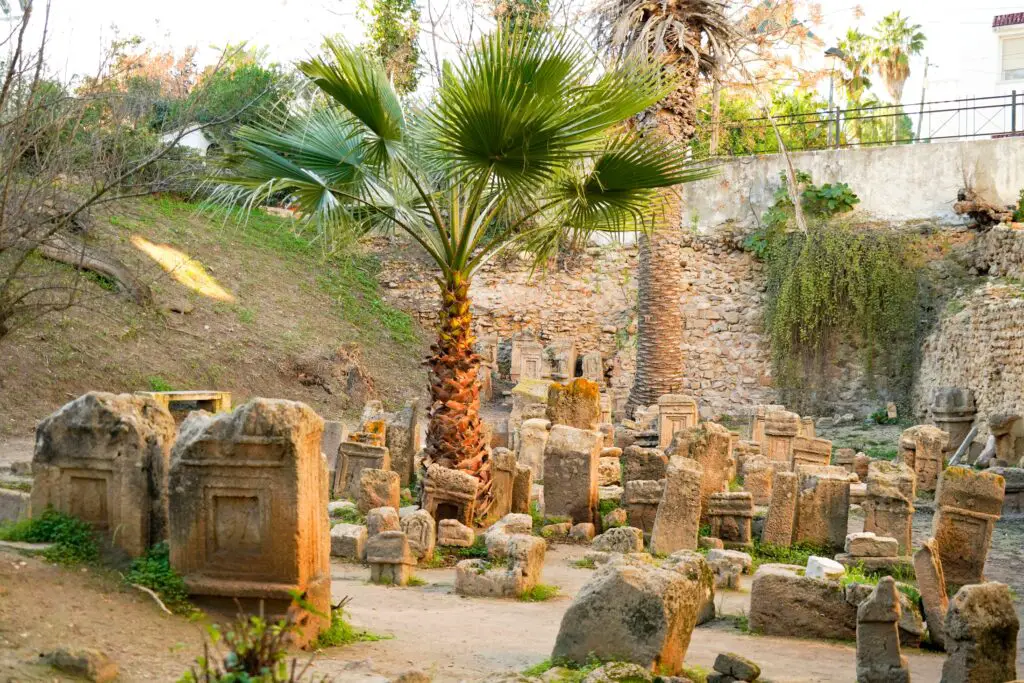
Carthage, located on the coast of modern-day Tunisia, was an ancient city-state that became a dominant power in the Mediterranean world. Founded in the 9th century BC, Carthage’s strategic location near the Mediterranean Sea made it a hub for trade and maritime power. However, the city’s geography also placed it at risk. Surrounded by rocky terrain and subject to the harsh realities of coastal weather, Carthage’s thriving port was both a blessing and a vulnerability. The city was repeatedly attacked by neighboring powers, particularly Rome, which ultimately led to its destruction.
Despite the harsh environment and frequent conflict, Carthage was able to survive and prosper for centuries, building one of the greatest naval fleets in history. The city’s ability to adapt to its coastal location and defend itself against outside threats was a testament to the resilience of its people. Unfortunately, after the Punic Wars, Carthage was completely destroyed, but its legacy as a powerful force in the ancient world endures.
7. Chichen Itza, Mexico
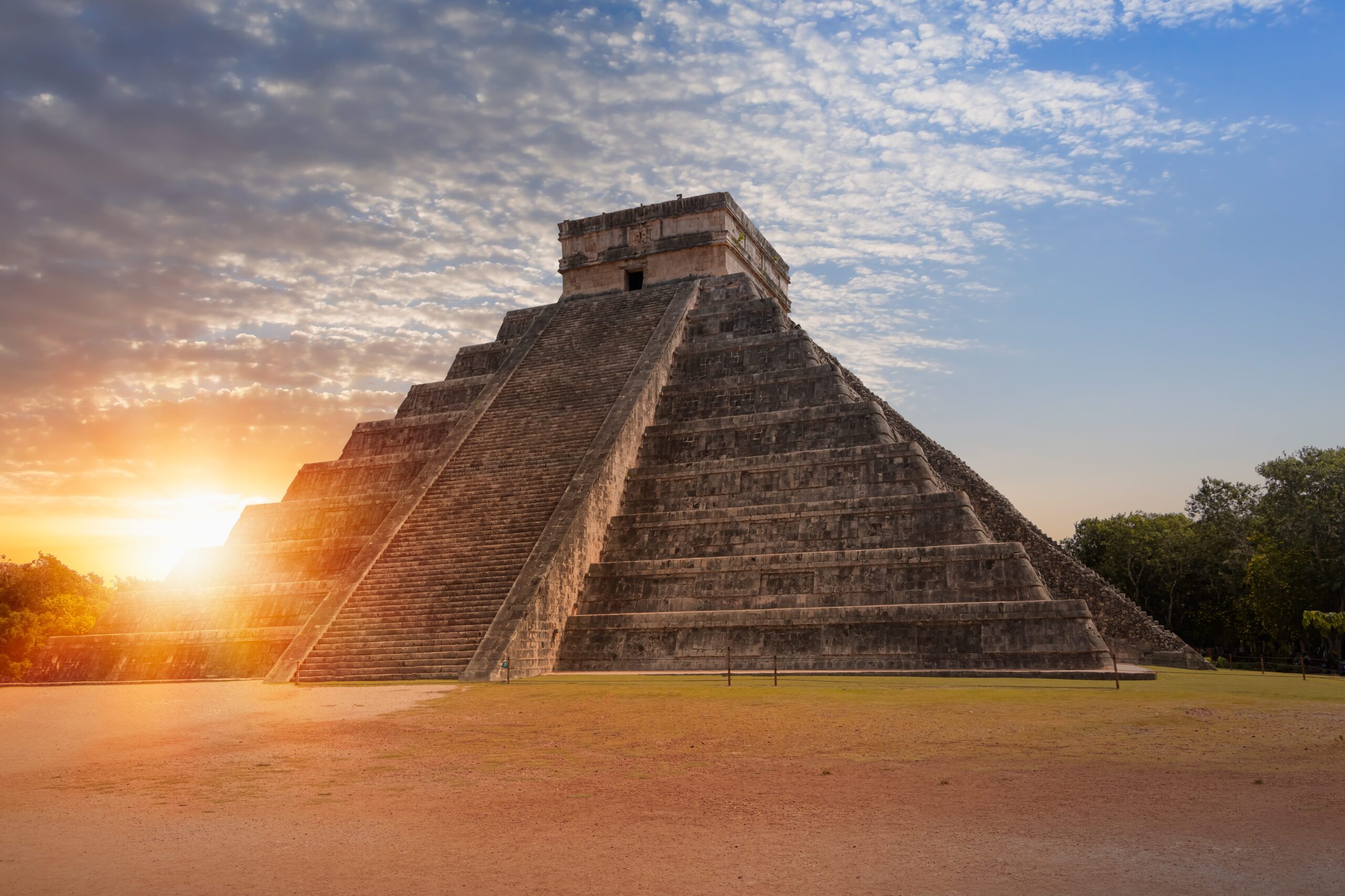
Chichen Itza, the ancient Maya city in the Yucatán Peninsula, was established around 600 AD in a region prone to droughts and extreme heat. The city became a major center of Maya civilization, known for its grand pyramids and advanced knowledge of astronomy. Yet, Chichen Itza’s location posed significant challenges. The Yucatán’s harsh climate, with its long dry seasons and short, intense rains, made it difficult to cultivate crops and ensure a reliable water supply. Nevertheless, the Maya built an impressive city using their understanding of the environment.
To overcome the region’s challenges, the Maya developed a sophisticated system of cenotes, or natural wells, which provided the city with much-needed water. The city’s strategic location also allowed it to become a powerful center of trade and culture. However, environmental stresses, coupled with political unrest, eventually contributed to the city’s decline by the end of the 10th century, though its influence remained for centuries.
8. Aksum, Ethiopia
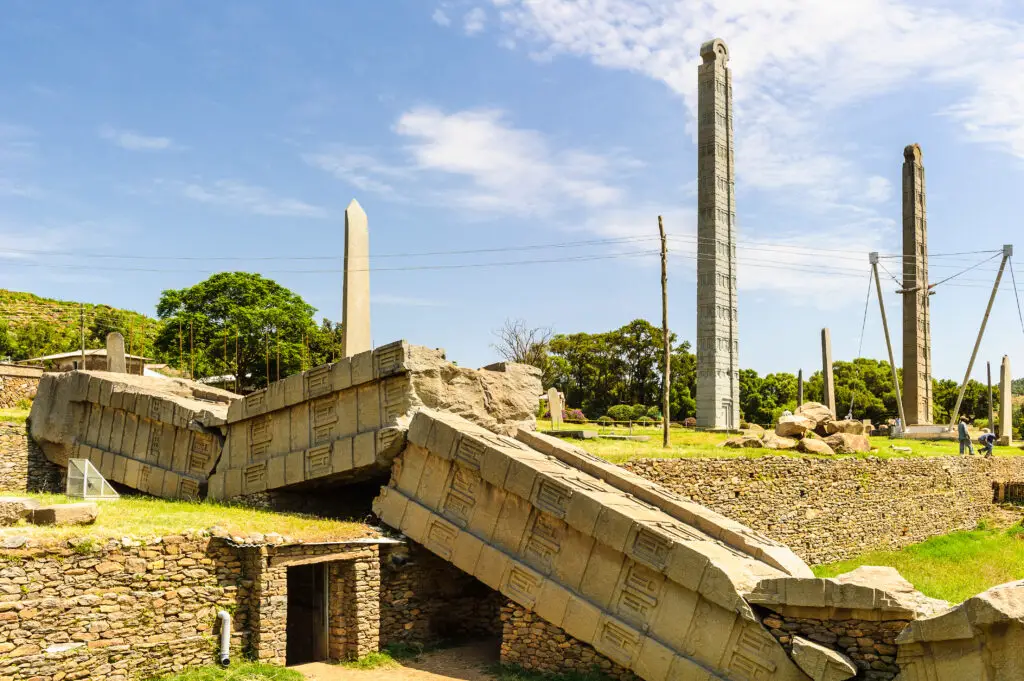
Aksum, the ancient capital of the Kingdom of Aksum, was located in the highlands of Ethiopia, an area known for its rugged terrain and unpredictable weather. Founded around the 1st century AD, Aksum was one of the most powerful and advanced civilizations in ancient Africa, thriving in a region that was often inhospitable. The city’s location in the highlands made it difficult to access, but it also provided natural defenses against invaders. Despite these advantages, the harsh environment, including occasional droughts and the difficulty of agricultural production in such an area, presented constant challenges.
The people of Aksum, however, were able to adapt to these conditions, using innovative agricultural methods to grow crops in the challenging landscape. They also developed sophisticated trade routes that allowed them to thrive as a center of commerce. Yet, the city eventually fell into decline, possibly due to a combination of environmental stresses, resource depletion, and political instability. Still, Aksum’s ancient ruins remain a symbol of human resilience in one of the most difficult places to build a civilization.
